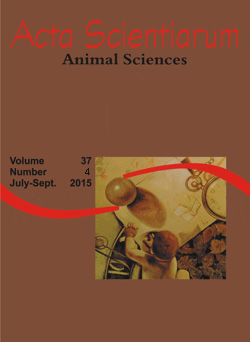<b>Feeding Nile tilapia with artificial diets and dried bioflocs biomass
Resumo
The effects of supplying dried bioflocs biomass to Nile tilapia juveniles were investigated in the present work. Fish were stocked in experimental rearing tanks for eight weeks. Selected variables of water quality, growth performance and effluent quality were evaluated. Fish were given different combinations of artificial diets and biofloc biomass, in wet (in natura) or dry form. As the supply of artificial diet decreased, the allowance of biofloc biomass increased in the same proportion. Biofloc biomass was produced in two 500-L tanks that received daily applications of dry molasses to adjust the C: N ratio of the water to 15: 1. The concentration of nitrite in water was only reduced in the tanks receiving wet bioflocs. The fish growth performance was poorer in the tanks that received dried biofloc biomass than in the tanks with wet biofloc biomass. Given the lack of positive results, there is no justification to dry the biofloc biomass aiming at delivering it as a dry biomass to reared fish.
Downloads
DECLARAÇÃO DE ORIGINALIDADE E DIREITOS AUTORAIS
Declaro que o presente artigo é original, não tendo sido submetido à publicação em qualquer outro periódico nacional ou internacional, quer seja em parte ou em sua totalidade.
Os direitos autorais pertencem exclusivamente aos autores. Os direitos de licenciamento utilizados pelo periódico é a licença Creative Commons Attribution 4.0 (CC BY 4.0): são permitidos o compartilhamento (cópia e distribuição do material em qualqer meio ou formato) e adaptação (remix, transformação e criação de material a partir do conteúdo assim licenciado para quaisquer fins, inclusive comerciais.
Recomenda-se a leitura desse link para maiores informações sobre o tema: fornecimento de créditos e referências de forma correta, entre outros detalhes cruciais para uso adequado do material licenciado.








































